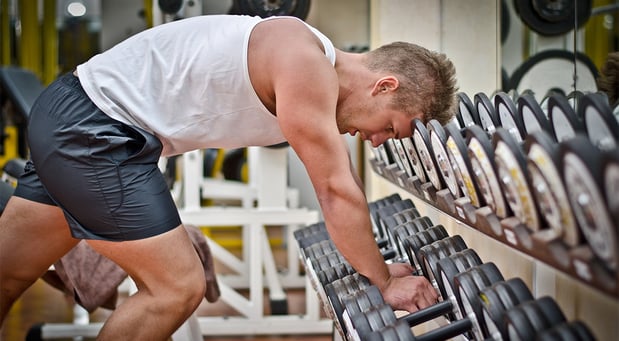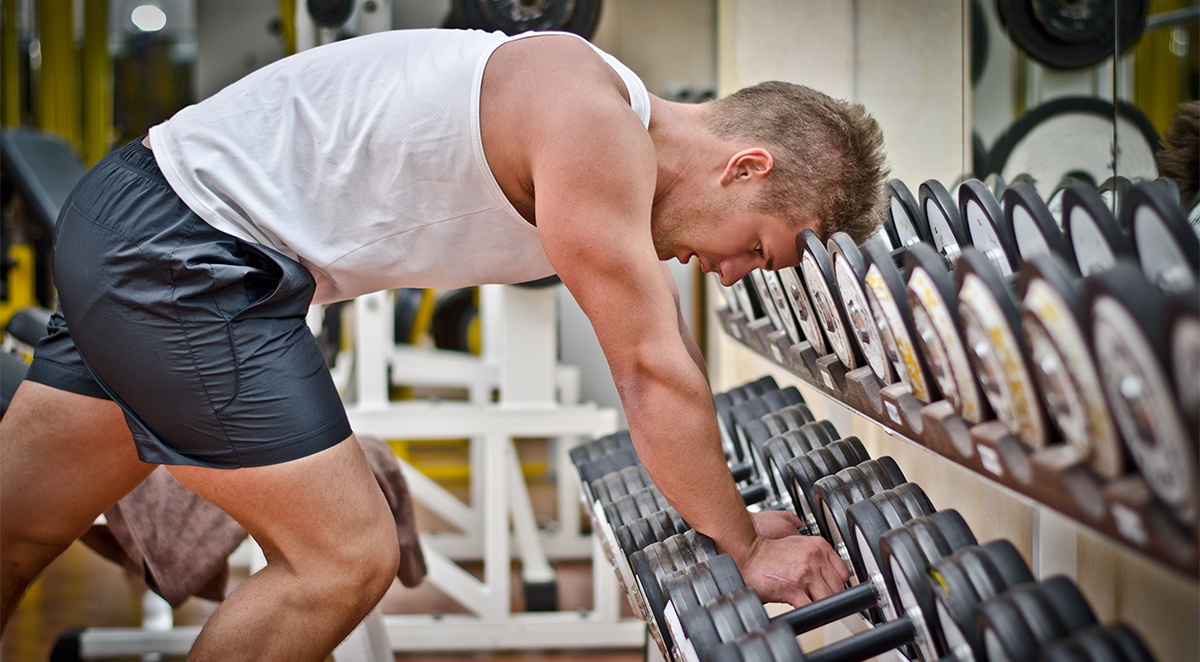Peripheral Fatigue During Strength Training

When elite athletes are faced with a tough workout or practice they often times have to dig deep and find the strength to finish it, no matter what it takes. It is not uncommon for athletes to experience this feeling on a semi-regular basis. But what is happening in these instances to make their muscles feel like they are about to give out? It’s the process of peripheral fatigue.
What is Peripheral Fatigue?
In the world of sports, fatigue can be defined as the inability to maintain a given exercise at a high intensity. This can mean falling off a goal pace in running, rowing, or swimming, or struggling to complete those last few repetitions in your strength training workout. Peripheral fatigue is an athlete’s inability to maintain their expected level of exercise intensity. Several factors play into peripheral fatigue, often acting in combination.
General Causes of Fatigue
There are many causes of fatigue that range from impairment within the muscles to psychological reasons for the decreased intensity. Any one or a combination of these can affect an athlete's peripheral fatigue.
Metabolite Depletion:
ATP (adenosine triphosphate) and CP (creatine phosphate) levels both decline with the onset of exercise. To review, ATP is the main energy source for the majority of cellular functions in the body and CP works to help maintain ATP levels by donating a phosphate group to ADP to make ATP. As these metabolites deplete (especially CP), muscle fatigue will set in as there is less energy to fuel muscle contractions.
Metabolite Accumulation:
The accumulation of dihydrogen phosphate (H2PO4-) and Lactic Acid (H=) cause muscle contractions to decrease in overall force. An increase in phosphate levels in the muscle, then causes a decrease in the force of muscle contraction. Accumilation of Lactic Acid also decreases muscle power by displacing Calcium ions that are essential to the process of muscle contraction.
Disturbances in Homeostasis:
This can refer to many things including dehydration, altitude, heat and cold temperatures. When it is very hot outside, blood is diverted from the working muscles to the skin.
Central/Psychological Factors:
Recent research published by a Professor of Exercise and Sport Science, Tim Noakes, stresses the role that brain in fatigue plays in a workout, especially during strength training. Because every muscle movement begins with a signal from the brain, research now shows that there can be muscle fatigue even when the muscle itself is not damaged. The interrelationship between central (the brain) and peripheral (muscles, motor nerves, etc.) systems are important in the onset of fatigue.
This study shows how local muscle fatigue is influenced by central nervous factors. When it is very cold outside, blood is rerouted from the working muscles to the body’s core, to keep more vital organs warm. Both these processes limit consistent oxygen delivery throughout the body, and can alone contribute to muscle fatigue. For additional information on homeostatic imbalance, please review how dehydration and altitude can contribute to the onset of fatigue from our previous building blocks posts.
Recap
Peripheral fatigue is a part of elite athletics and is almost unavoidable at certain times. Energy sources are depleted and harmful metabolites accumulate, both contributing to the inability to maintain full exercise intensity. Not only do cellular changes within the muscle contribute to fatigue, but there is increasing evidence that the brain has a major effect on an athlete’s perception of fatigue. The human body is a complex network and the connections between the nervous and muscular systems are essential to proper function and high-level performance. Fatigue is not preventable; however, with proper nutrition, hydration and the right mindset going into a hard workout or race can help delay fatigue onset and help athletes go further than they might think.
Resources:
Brooks, George et al. Exercise Physiology: Human Bioenergetics and Its Applications. McGraw Hill: New York. 2005.
Asmussen E and B. Mazin. Recuperation after muscular fatigue by "diverting activities". Eur J Appl Physiol Occup Physiol. 1978 Feb 21;38(1):1-7.
About the Author

Shelley graduated from UC Berkeley in 2012 majoring in Integrative Biology and is currently applying to nursing school. She competed on the women’s swim team at Cal and contributed to three NCAA Championship team titles in her four years. Shelley’s interest in exercise physiology was sparked after discovering connections between the materials learned in her anatomy lab and her athletic endeavors. It is her goal to share this knowledge and inspire other athletes to make these connections to help them reach their personal goals. After finishing her swimming career in 2012, Shelley is now a triathlete utilizing her background in exercise physiology to aid this athletic transition.
Related Posts

The Best Bench Press Variation You’re...
This post is part of our Coaches Corner series with Taylor Rimmer. Taylor is NSCA-CPT, StrongFirst...

Does Powerlifting Harm Heart Health?
A recent study has discovered that a 12-week supervised strength training program (SSTP) may result...
-1.png)
Barefoot Running: Is It For You? |...
Run Free: Consider Less Cushion
Updated October 2020:
With more athletes looking for ways to...


![Bridge FMS Blog CTA [transp.]](https://blog.bridgeathletic.com/hs-fs/hubfs/Bridge%20FMS%20Blog%20CTA%20%5Btransp.%5D.png?width=1200&name=Bridge%20FMS%20Blog%20CTA%20%5Btransp.%5D.png)
